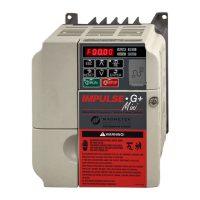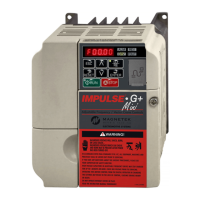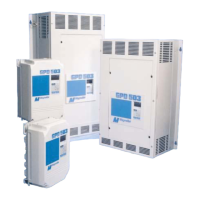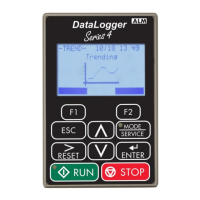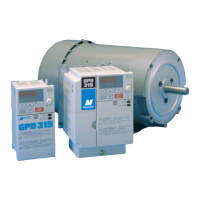IMPULSE
®
•G+ & VG+ Series 4 Technical Manual
November 2020
Page 216
6.2.8 Fault Code: OC–Over Current Fault
6.2.8.1 Definition
An over current fault is caused if the output current exceeds 200% of the VFD rated output current. This fault can
be caused by short circuits in the wiring or in the motor, and it can also be caused by parameters that are not
adjusted properly. One other cause of this fault could be erratic or no encoder feedback. In the last instance, the
VFD is trying to command the motor to hold a position, but due to the encoder problem, is unable to find the correct
position. This would cause the VFD to increase current output to the motor in an attempt to correct the position until
an over current fault occurs.
6.2.8.2 Corrective Action
1. Check the motor wiring and the motor itself for a short between phases.
2. Check the alignment of the encoder pulse wheel with the sensor head, or the encoder shaft coupling
(depending on the type of encoder used). If the pulse wheel is misaligned or the shaft coupling is loose the
VFD will get erratic pulse signals or no signals at all possibly causing an OC fault. Repairs to the encoder
wheel or shaft coupling should be made immediately before again attempting to operate the hoist.
3. If the encoder appears to have no mechanical problems, the encoder cable should be checked for damage and
replaced if a problem is found.
• Each of the encoder wires should be check for continuity.
• The wires should be checked for shorts between any two wires.
• The shield should be check for proper grounding.
• The wires should be checked for shorts to the shield or ground.
• Visually inspect the cable for damage that may be causing intermittent problems.
4. If none of the above steps has identified a valid problem(s), check if any of the torque limit parameters (C07-01
to C07-04) have been changed. If these parameters have been changed to allow a higher torque value, it could
cause overcurrent trips.
NOTE: Changing these parameters could also induce speed deviation or overload faults. Only a trained technician
should modify these parameters. It is desirable to have as fast a fault reaction time as possible without
causing nuisance trips.
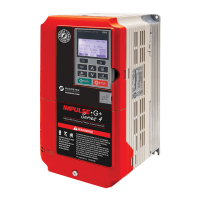
